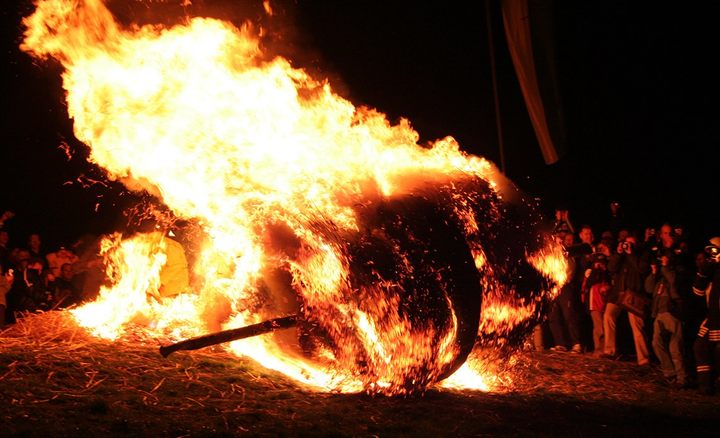
Spinning Balls of Fire Light Up Spring in This German Town
Plus fireworks, music, and maybe a goddess or two.
When church bells ring out on a beautiful spring evening in the small German town of Lügde, the village people grab their torches. The sun has been set for about an hour when they approach six large wooden wheels, each 6.5 feet tall, weighing about 620 pounds, and stuffed with straw. The torchbearers light the wheels on fire and push them down a hill. One by one, each giant fireball careens down the slopes, picking up speed as they fly downhill in a blur of embers.
These spinning flames are part of a festival called Osterräderlauf Lügde, or Easter-Wheel-Run. This is how the town celebrates spring, in a seemingly chaotic fiery tumble that’s actually quite controlled and carefully planned—even as participants work to put out impromptu flames in the aftermath.
It’s difficult to trace the exact origin of the tradition, which has been linked to Easter, or Ostern in German. Some talk about a goddess named Eostre or Ostara, who may have been celebrated in April with feasts, according to a text from the year 725. However, no other evidence of this goddess exists before 1835, when one of the Brothers Grimm speculated about her existence, so there’s little else that can be concretely said about her or any associations.
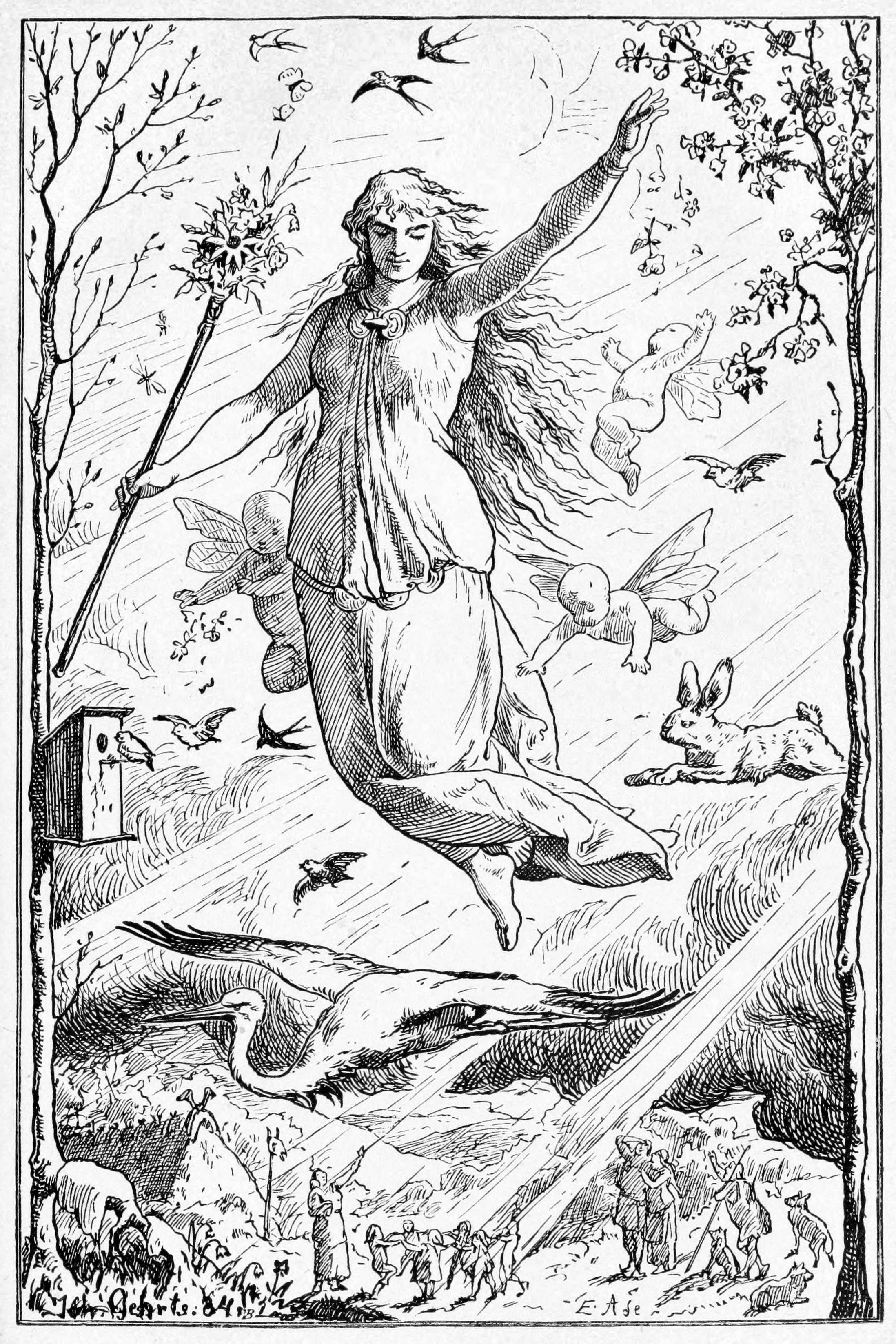
The earliest record of the burning wheels comes from an 8th-century German monk and scholar named Einhard, who lived during the rule of Charlemagne, the emperor who spread Christianity through the then-mostly Pagan lands. According to Einhard, Charlemagne visited the town of Lügde, where locals were celebrating winter by burning wooden wheels. Charlemagne decided to allow the Pagans to keep the tradition, but only if they changed it to celebrate the resurrection of Christ. It therefore became a lasting Easter tradition.
While many rituals fall by the wayside in modern times, this tradition is still going strong, mostly due to a club called the Osterdechenverein Lügde e.V. The people in this association are called dechen, a medieval term used as early as 1410, describing those who uphold ancient traditions and rituals.
There are some 600 members involved who preserve each individual craft and pass the skills along to the next generation. “My grandfather was the managing director, my father Detlef Marz was Oberdeche (Head Deche), and I joined the Dechenverein when I was 14 or 16 years old,” says Andreas Marz, the new chairman of the club.

They reuse the same wooden structures over and over again throughout the years, so some of the wheels are up to 40 years old. One of the dechen uses a tractor to haul the wheels into a river, where they float for a week, soaking up the water. This is an important step for ensuring the fire doesn’t get out of control. The idea is that only the straw in the middle will burn, rather than the hard wood, so that the flames burn brighter, can be extinguished more quickly, and don’t consume the wheel, which can then be used again next year.
After being thoroughly wetted, the wheels are stuffed with bunches of straw in the spaces between the wooden spokes. Franz-Josef Schlieker is a deche who cares for the straw. “It is an old species of rye that is grown especially for this event,” he says. Though of course any type of straw would burn, he says the old-fashioned, long rye is best, since it “has extra-long, man-high stems, making the stuffing of the wheels more efficient.” They use about 1,320 pounds of it each year.
Someone else then ties the bundles of straw with slim branches from Hazelnut trees. They use about 500 branches each year, their practiced fingers looping the bendable wood into neat knots. Over the centuries, this type of tree has been found to withstand the fire longer than other wood or ropes.
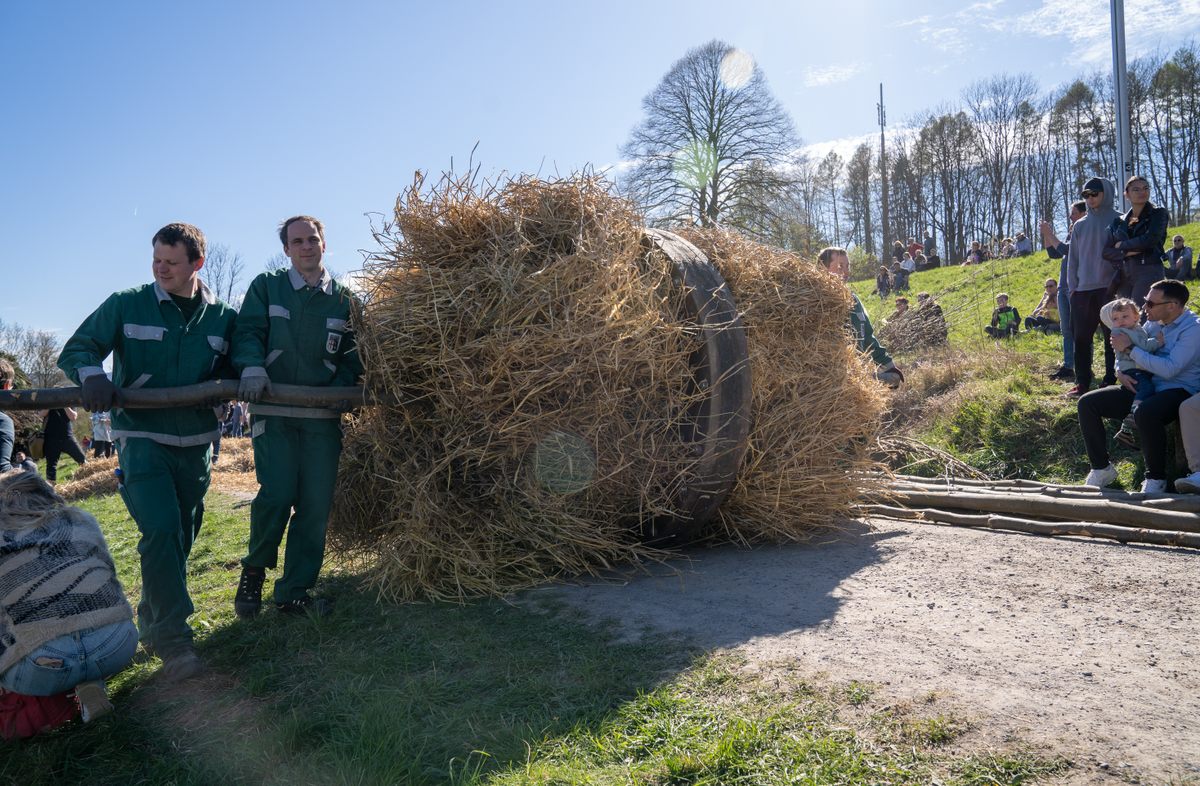
The finished wheels are carried to the market square on a decorated horse-drawn wagon. On Easter Sunday, the wheels are paraded through the town, accompanied by a brass band. They’re then placed at the top of the Osterberg, Easter Mountain, just outside the town limits.
At 8 p.m. that night, the townspeople light a gigantic bonfire. About 30,000 visitors attend, tripling the town’s population each spring. Then, an hour later, a shot rings out to a roaring cheer of the crowd, and the first wheel is set alight. All six wheels take their turn rolling downhill toward the river. Legend has it that the further the wheels roll, the better that year’s harvest will turn out.
At the bottom, the burning wheels find their final resting place, the straw smouldering under the careful watch of the fire brigade, and the dechen scrambling to put out any flames that may still be alight. To add to the fiery festivities, the evening ends with a fireworks display.
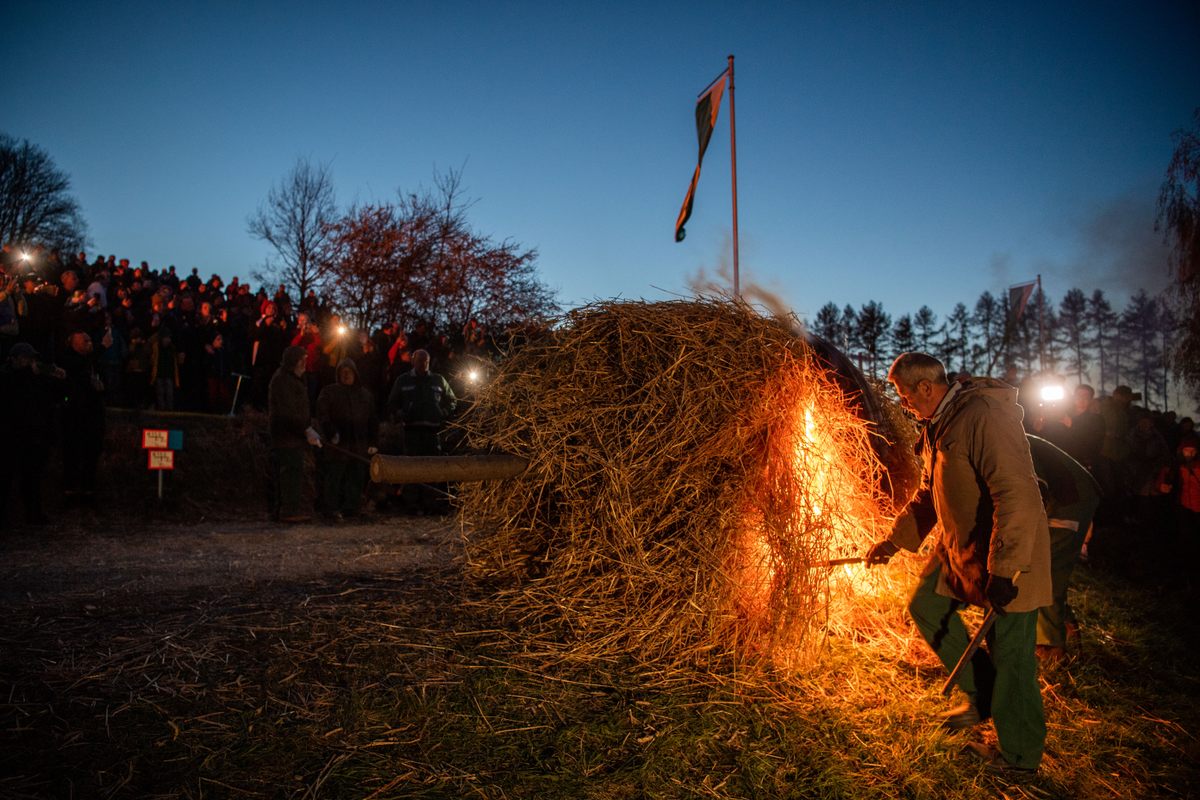
“Modern safety regulations would never allow a new event like this to take place,” says Uwe Stumpe, former chairman of the club and nephew of the late historian and long-standing stalwart of the tradition, Dieter Stumpe. “But because of its centuries’ old legacy and practice, we are very honored to be able to hold this event every year.”
Mayor of Lügde, Bürgermeister Torben Blome, a deche himself, appreciates the support of the local people, as well as those who come to the town for the Easter weekend. “This tradition is part of our identity. That is one of the reasons UNESCO listed this part of our heritage in the first place,” he says. “Lügde without the Easter-wheel run—that’s unthinkable.”


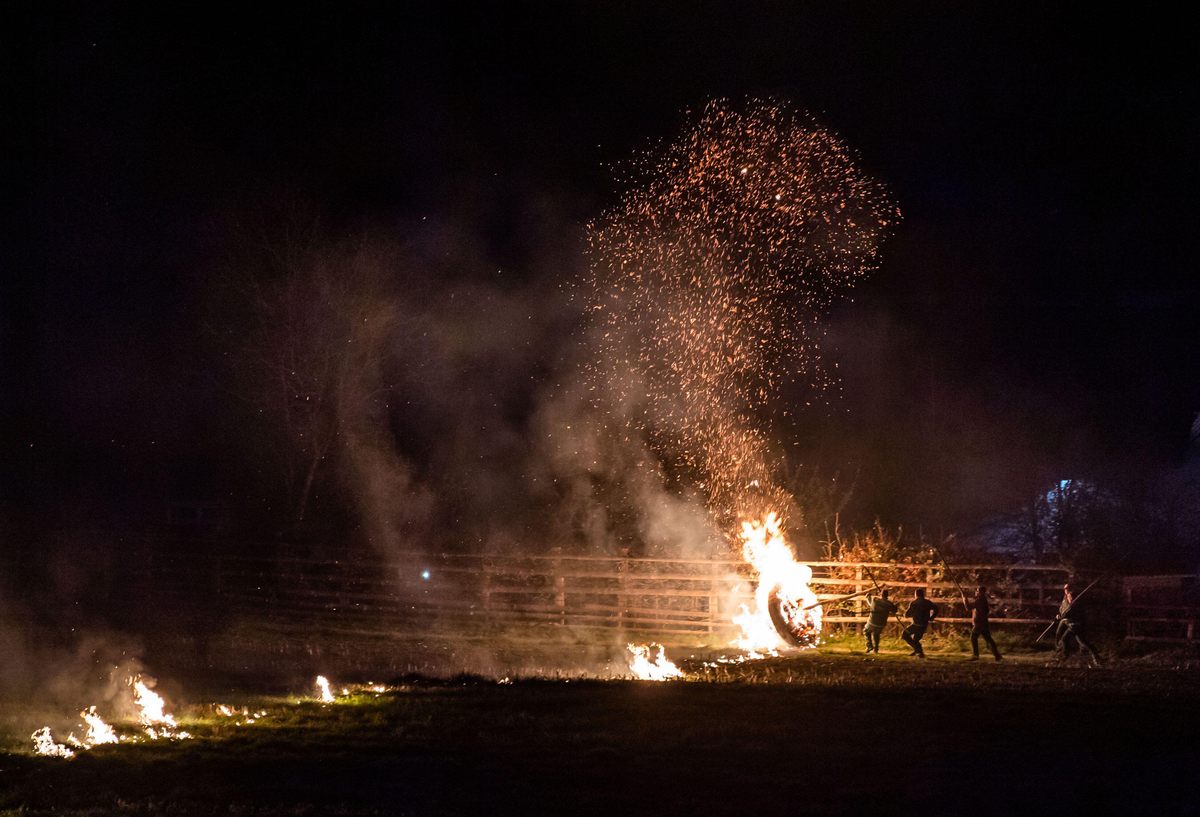
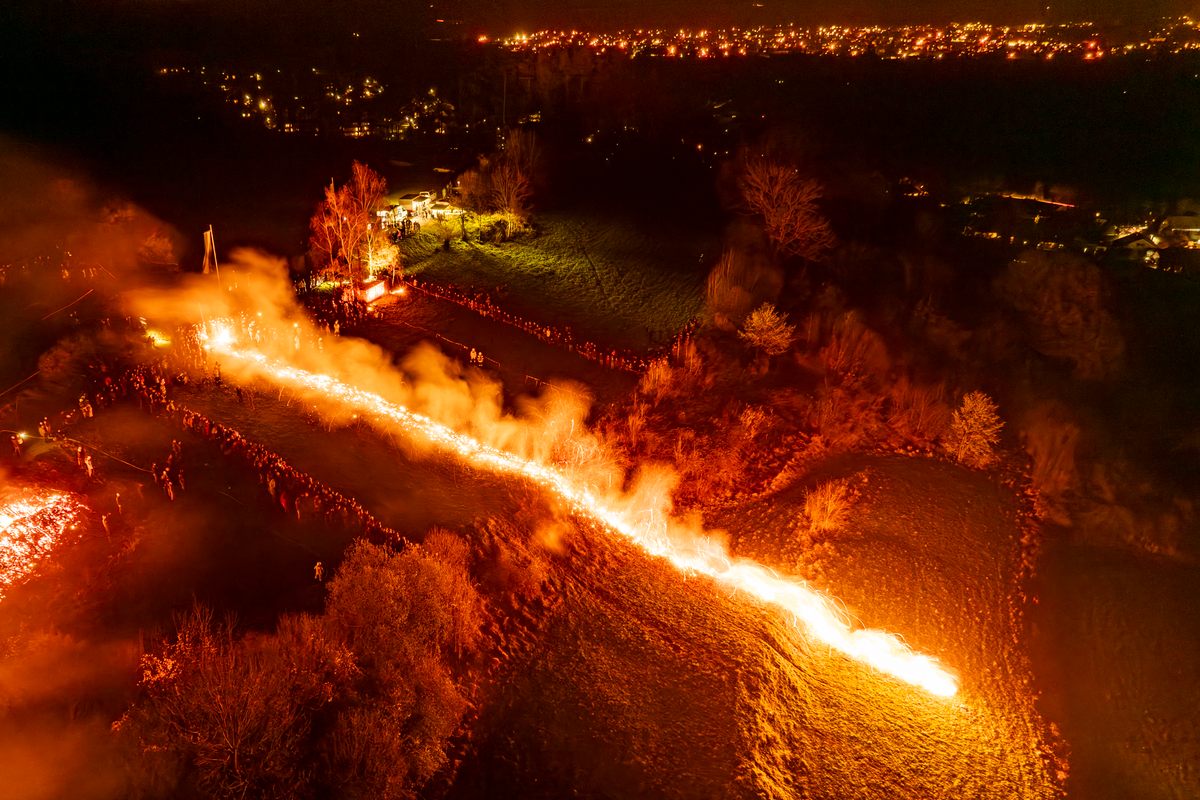





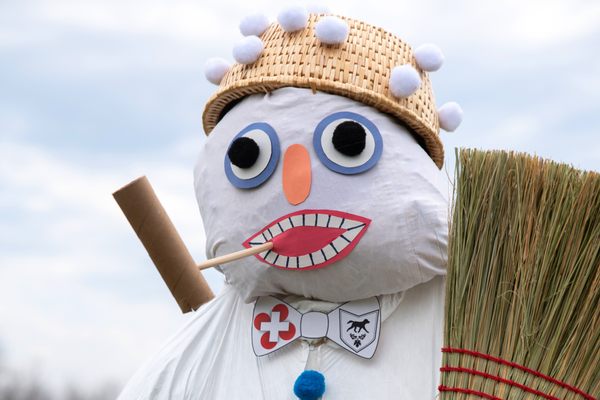










Follow us on Twitter to get the latest on the world's hidden wonders.
Like us on Facebook to get the latest on the world's hidden wonders.
Follow us on Twitter Like us on Facebook